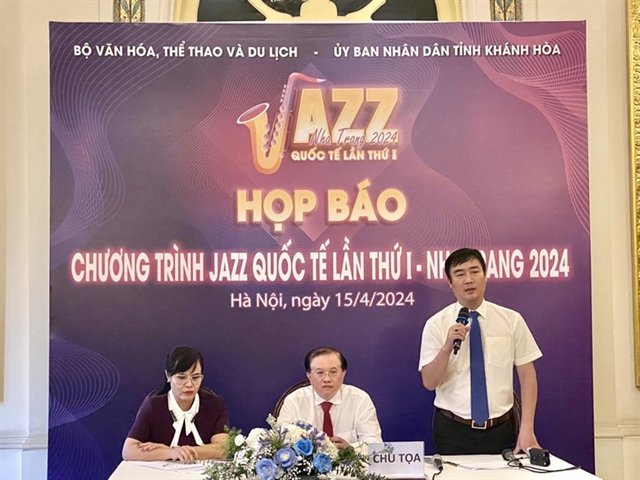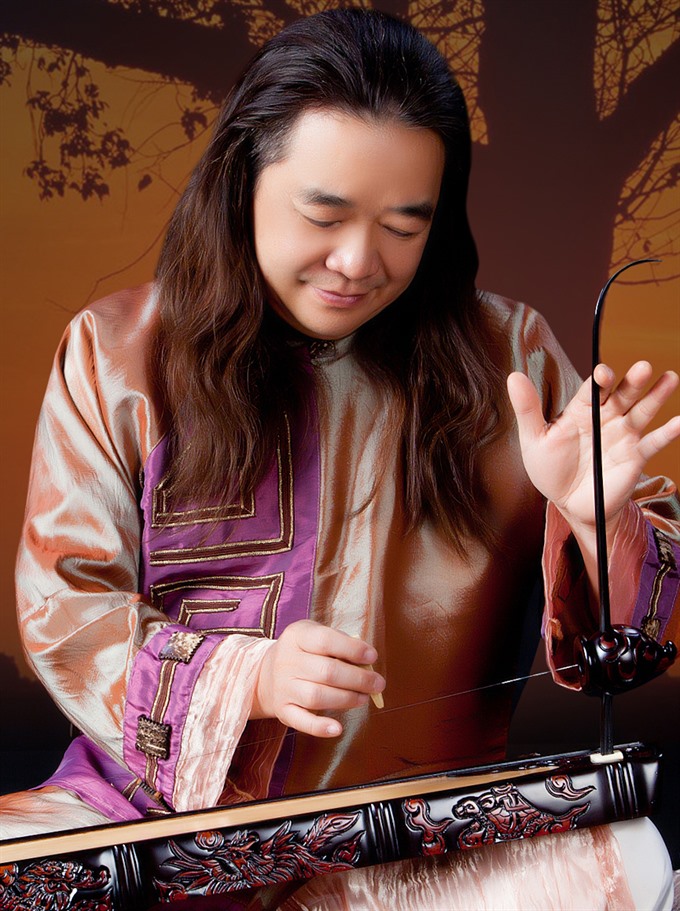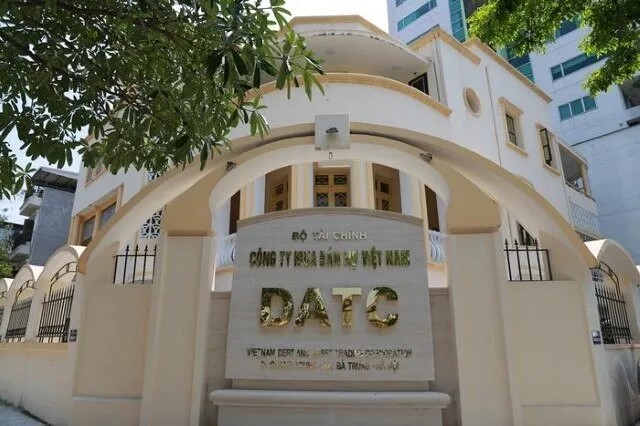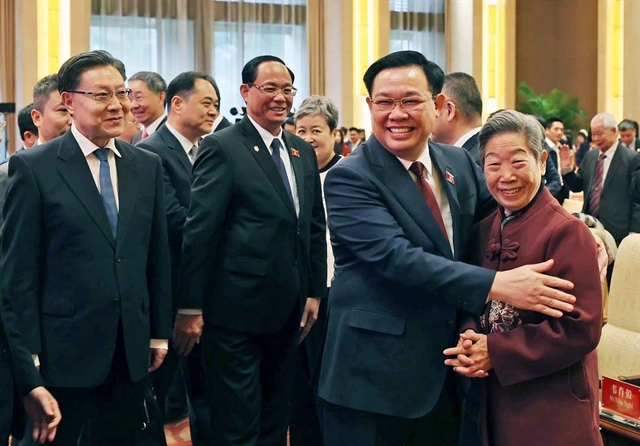 Life & Style
Life & Style

Overseas Vietnamese musician Phạm Đức Thành performed in a concert at the Hà Nội Opera House early this month. The concert was a rare event held to honour the đàn bầu (monochord), a unique Vietnamese instrument.
 |
| Musician Phạm Đức Thành |
Overseas Vietnamese musician Phạm Đức Thành has performed in a concert at the Hà Nội Opera House. The concert was a rare event held to honour the đàn bầu (monochord), a unique Vietnamese instrument.
Born in 1956 to a musical family in Đoan Bình Village, Gia Phú Commune, Gia Viễn District in the northern province of Ninh Bình, Thành learned to play traditional instruments at early age, such as drum, đàn nhị (two-string fiddle) and đàn bầu.
He left his homeland for Hà Nội to join the Việt Nam Chèo (Traditional Opera) Theatre and officially became a professional đàn bầu performer in 1974. He graduated with distinction at the Việt Nam Institute for Musicology’s Vietnamese Traditional Music College in 1983. He also studied the southern folk music of central and southern Việt Nam.
He has been living in Canada since 1996. Beyond the traditional music of Việt Nam, he has used đàn bầu to integrate seamlessly with the sounds and rhythms of various peoples from around the world.
Nguyễn Thúy Bình interviews musician Thành about đàn bầu and how he became a master of the folk instrument.
Audiences enjoyed your concert honouring the đàn bầu at Hà Nội Opera House. An audience member said that hearing Vietnamese folk songs played on the đàn bầu made her emotional. What about you?
I’m very happy to hold the first concert to honour an instrument that has one string. It is a big challenge for a đàn bầu musician. The concert comprises 18 items to introduce the audiences to the development of đàn bầu at different historical periods. The performances show the great pride of the Vietnamese to have an amazing instrument.
The concert producers including music director, theatre director and performers made it a wonderful night. For me it was a particularly emotional performance and a milestone in my career.
You have been living abroad for a long time. Why did you want to have a concert in Việt Nam?
I’m Vietnamese and I left my homeland about 30 years ago. During this time, I had the chance to attend music festivals around the world where I got to know more about the beauty of international folk music and modern music genres. I always introduce đàn bầu to international friends. As a result, Vietnamese đàn bầu has made a great impression because it is unique.
That is the reason why I wanted to have a concert in Việt Nam. The concert is a chance for me to show what I have learned and I also want Vietnamese young people to be proud of this Vietnamese instrument.
You learned many traditional instruments at a young age. When did you become attached to đàn bầu?
Just like fate when I was five years old I was charmed with the sound of the đàn bầu from loudspeakers. My mother used to scold me many times because I paused during my meals to climb up the tree to hear the đàn bầu sound from the far-away loudspeakers.
From the age of six, I chose the đàn bầu as my most favourite instrument although I can play dozens of other instrument. Đàn bầu helps me to express my feelings truthfully.
Are there other instruments around the world which have one string like the Vietnamese đàn bầu?
There are many countries in the world that have a one-string instrument. But the way to play them is very different. The Chinese instrument is called duxianqin and the Japanese instrument is called ichigenkin. The two instruments are plucked with a plectrum by one hand and the other hand uses a tubular device to depress the string.
African countries have the ugubhu or mouthbrow which looks like a bow. India has the ektar and Cambodia the sadew.
The Vietnamese monochord đàn bầu is perfect. The player uses a long plectrum to pluck, making overtones at the nodes in the string. With the left hand, the player pushes the flexible rod toward the instrument with the index finger to lower the pitch of the note, or pushes it away from the instrument with the thumb to raise the pitch. This technique allows the musician to play any musical genre from any country in the world.
What do you think about the development of the đàn bầu in Việt Nam ?
Đàn bầu has a more important role in orchestras in Việt Nam. When I organised my concert the producers were very worried because many audiences doubt whether a one-stringed instrument can perform solo.
The concert shows that the đàn bầu can be combined with western instruments such as violon and saxophone. I believe strongly that the đàn bầu will go further to play different genres of music and appear in orchestrates in the world. However to reach this target it needs support from cultural managers and đàn bầu musicians.
You have spent a long time to research the đàn bầu. What do you see as the most important way to develop the instrument?
My concern is that it is necessary to have co-operation between cultural managers and đàn bầu musicians aiming to popularise the instrument among the community and organise music festivals and music competitions for musicians.
The most important thing is that we need to affirm that đàn bầu belongs to the Vietnamese. — VNS









